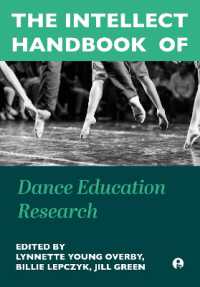- ホーム
- > 洋書
- > 英文書
- > History / World
Full Description
Simultaneous to the rise of industrial capitalism, agriculture - still the mainstay of most human communities around the globe in the late nineteenth and early twentieth centuries - underwent dramatic changes. In many countries, including most settler economies, a large-scale, input-heavy, and increasingly mechanized commercial agricultural sector emerged, while scores of struggling rural producers were squeezed off the land. The same period saw the rise of a global 'colour line': increasingly rigid social categorizations based foremost on skin colour.
By considering agricultural progressivism as both a Pan-Africanist and white supremacist movement, Julia Tischler here demonstrates how the agrarian question and the 'colour line' intersected. Taking a uniquely transnational and comparative approach, the book explores these rural transformations through the lens of agricultural education - including agricultural colleges, extension services, children's clubs, and domestic training. In so doing, and by taking South Africa in the segregation period as its central case study - an extreme example of both rapid agrarian change and state-sanctioned racism - the book offers important insights into global questions of rural reform and race politics, addressing all scholars and students who seek to understand the intricate links between race, knowledge, and rural reform in the twentieth century.
Contents
Introduction
1: 'The Kingdom of Mealies': Black Agricultural Progressivism and the Politics of Compromise in the Eastern Cape, 1900-1930
2: Pan-African Agrarianism
3: From 'Progress' to 'Rehabilitation': Liberal Segregation and Agricultural Policy
4: The 'American Negro' and the White Atlantic
5: Domesticating Black Women
6: Rural Reconstruction in the Imperial Orange River Colony
7: White Farmers' Provincial Science: Glen College of Agriculture
8: The State of Planning: Agricultural Scientization and the South African Nation State
9: Eugenic Agriculture and Transnational Networks of Rural Education
10: Women Farmers and Farmers' Wives
Conclusion








